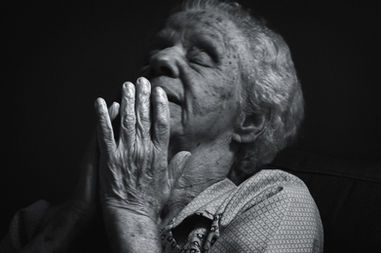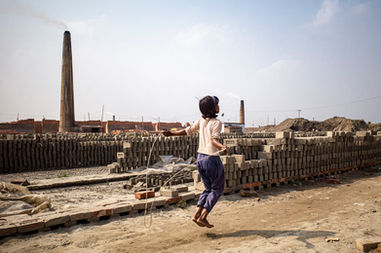
UNDER THE CLOUDS
Giordano Simoncini presents a visual ethnography of the interconnectedness of indigenous cosmology, material life, and the ecological balance within the Quechua communities of the Peruvian Andes.
July 13, 2025
PICTORIAL STORY
photography GIORDANO SIMONCINI
story MELANIE MEGGS
In Bajo las nubes; La Resistencia Espiritual y Material Del Pueblo Quechua (Under the Clouds; The Spiritual and Material Resistance of the Quechua People), Italian photographer Giordano Simoncini presents a visual ethnography of the interconnectedness of indigenous cosmology, material life, and the ecological balance within the Quechua communities of the Peruvian Andes. What emerges is not simply a document of survival, but a meditation on interdependence, where the spiritual and the material are not separate spheres, but aspects of the same reality.
Photographed in the Sacred Valley and Queros region, the project observes the rituals and exchanges that sustain life across a landscape shaped as much by spiritual belief as by physical labor. The Quechua people continue to live in close relation to the land, maintaining a system of knowledge shaped by oral tradition, ritual practice, and seasonal cycles. Their worldview is structured around a deep relationship with Pacha Mama, often translated as Mother Earth, but more accurately understood as a space-time entity encompassing soil, time, place, and energy. In this cosmology, land is not a resource, but a being.
Reflecting on his experience, Giordano explains: “As soon as you enter those mountains and connect with the communities living there, you realize they are deeply intertwined expressions of the same form of resistance. A resistance that involves not only people, but the entire ecosystem.”
Giordano’s photographs enter this space not to illustrate culture, but to observe how this way of life continues to exist under increasing strain. Climate disruption, extractive industry, and state development pressures have altered landscapes and threatened access to water, soil, and ancestral territory. Yet these communities persist in holding a vision in which balance is not idealised but enacted, day by day. Bajo las nubes offers a record of how a lifeway is lived, not discussed — how belief exists not in doctrine, but in gesture and repetition.
-min.jpg)
This project invites the viewer into a relational worldview, where the human body is not separated from the land it inhabits. It raises questions about how one documents life without disrupting it, and how visual language might reflect forms of knowledge that do not speak through abstraction, but through presence.
Born in Rome in 1997, Giordano Simoncini began photographing in 2016 during a personal journey through Patagonia. His academic background in philosophy, completed at Sapienza University, informs his approach to photography — one that draws from conceptual inquiry as much as from visual attention. His interest in long-form, observational work developed further through a workshop in Peru with Ernesto Bazan, former Magnum photographer, whose influence shaped both the thematic and ethical direction of this project, Bajo las nubes.
Reflecting on the personal motivations behind the work, Giordano explains, “Since I was a child, I’ve had an animistic connection with nature — it’s the only form of belief I’ve ever felt truly mine. That’s probably why I chose to begin my first long-term work there: I immediately felt a strong sense of affinity with both the land and the people. It all unfolded naturally.”
Giordano does not claim neutrality. His method involves proximity without dominance — photographing with deliberation, particularly when invited into private spaces. In Queros, he documented a family living with food scarcity who offered him to stay with them; “The most delicate moment didn’t come during the spectacular Quechua ceremonies, which I was able to narrate with immediacy and instinct. It happened instead in Queros, when a family, despite having very few potatoes left…invited me to share lunch and dinner and offered me a bed in a former sheep pen. That was the moment I most strongly felt the weight of my role. I decided to photograph slowly, without rushing, without trying to ‘capture’ something. I waited, simply observing their kindness in that intimate space, in order to return it as truthfully and naturally as possible.”
Giordano embraces a form of witnessing that is active but unobtrusive. His role is not to disappear from the frame, but to remain accountable to it. The people in the images are not subjects to be studied, but participants in a shared space of exchange. His process invites viewers to consider not just what they are looking at, but how they are looking.
The Quechua principle of harmony — expressed in the idea that all life is “half earth and half sky” — forms the conceptual and ethical axis of the project. This belief challenges anthropocentric frameworks by rejecting divisions between human and environment, body and spirit, labor and ritual. Giordano’s photographs do not claim to represent the Quechua people in totality. Rather, they offer a glimpse into a lived worldview, where cosmology is not an abstract system, but a way of moving through the world: in the tending of animals, the sharing of meals, the act of walking with purpose across land that is seen not as property, but as kin. This is the principle of “unite and create” — not a fixed idea, but a practice embedded in daily life. These gestures are not symbolic. They are the structure of life as it continues.
Giordano does not impose a narrative, nor does he draw the work toward a singular conclusion. Instead, his photographs invite reflection — not only on the life he depicts, but on the assumptions, we bring to the act of viewing. The project does not seek to translate the Quechua worldview into terms more legible to an outside audience; it resists simplification and instead holds space for nuance and difference. As Giordano explains, “What I hope to do is raise a question, simply by showing — without filters — a way of life grounded in balance with the natural elements…I believe the urgency lies in questioning our own model, not in imposing a new one.”

This desire to provoke reflection rather than impose interpretation gives Bajo las nubes its contemporary significance. Giordano Simoncini’s restrained aesthetic and ethical approach allow the subjects to emerge not as objects of study, but as agents within their own systems of meaning and relation. They invite viewers to reconsider the structures — visual, political, environmental — that shape how we relate to the land and to one another. The work does not provide answers; it poses a question: what might we learn from a way of life where the human is not at the center, but one part of a greater whole? Bajo las nubes affirms that resistance is not always loud. Sometimes, it is quiet, ritualized, ancestral — and profoundly alive under the clouds.
That same ethic of observation and restraint extends into Giordano’s broader photographic work, where he continues to explore the complex relationships between human communities, land, and the systems that shape them. His current project, based in Kenya, expands this inquiry into new territory. It documents the socio-environmental consequences of so-called “green” development policies and their impact on the Ogiek and Maasai communities — Indigenous peoples who, like the Quechua, face the ongoing erosion of ancestral land through displacement, conservation agendas, and extractive policy. Through this evolving body of work, Giordano Simoncini continues to ask how photography might bear witness without appropriation, and how it might make space for stories that speak not through volume, but through continuity, care, and presence. The photographs can be viewed through his portfolio, accessible via the links provided.

The views, thoughts, and opinions expressed in the text belong solely to the author/s and are not necessarily shared by The Pictorial List and the team.



































